The world has seen dangerous diets before, but none quite like Angus Barbieri’s. On June 14, 1965, he chose a method so risky that even doctors were left stunned and cautious. We’re not talking about skipping a few meals. Angus, a 27-year-old Scotsman, made headlines for surviving 382 days without eating solid food—yes, over a year of extreme hunger. But before you call it willpower, let’s be clear: this wasn’t safe. It was monitored by doctors who never expected him to last this long. They were in for a shock.
456 Pounds and Desperate

Angus wasn’t a celebrity or scientist—just a young man working in a fish and chip shop with his father. His weight had climbed to an alarming 456 pounds.
He’d tried diets. He’d tried cutting back. But in his mind, nothing had worked. So, he walked into Maryfield Hospital with a plan that sounded more like a dare.
“I’m not going to eat,” he told them. The doctors hesitated. But Angus wasn’t asking for permission—he was asking for supervision. And so, the experiment began under uneasy medical eyes.
Maryfield Hospital Agrees… Hesitantly

Doctors at Maryfield recommended no more than 40 days without food. That was already pushing it. They didn’t expect Angus to go beyond that—not even close.
But as days passed, he didn’t cave. He didn’t ask for toast. He didn’t even flinch. Instead, he told his doctors he felt “just fine.” That wasn’t what they expected.
They monitored his vitals. They supplied vitamins, minerals, and fluids. But the more he refused food, the more the staff wondered—how far was this man really going to go?
Doctors Said 40 Days Max—He Blew Past It

Angus crossed the 40-day mark as if it were nothing. Instead of declining, he said he felt alert—calm, even. The human body shouldn’t react that way to starvation.
The team kept checking his glucose levels. They kept expecting a crash. But somehow, his system adjusted. His body had entered a starvation state, but he wasn’t slowing down.
He still had a goal weight in mind. “Not yet,” he kept saying, week after week. And so, the hospital staff kept watching, stunned. The fast continued beyond logic.
The Hunger That Wouldn’t Quit

Fifty days passed. Then ninety. Then one hundred. Angus’s body kept shrinking, but his resolve only grew stronger. He was burning fat—fast—but still speaking, walking, thinking clearly.
He was allowed to go home, surprisingly. Doctors said they trusted him to continue. Most patients couldn’t resist food. But Angus? He said he didn’t even miss it.
It was now a countdown to something no one had ever seen. The question wasn’t “how is he doing this?” anymore. It was, “what happens if he doesn’t stop?”
How Angus Stayed Alive

He didn’t eat food, but he didn’t go completely without nourishment. Angus drank tea, coffee, and mineral water. Doctors gave him potassium, sodium, and vitamins to keep him going.
It wasn’t ideal. This wasn’t a sustainable lifestyle. But somehow, his organs kept functioning. His brain stayed clear. The supplements kept his body barely on the edge.
He added sugar and milk to drinks later in the fast, but no solid food ever touched his lips. Still, doctors couldn’t believe how well he was holding on.
The Medical Team Was Baffled

Doctors at Maryfield were expecting breakdowns, complications—something. But Angus kept showing up for checkups with steady blood pressure, alert eyes, and a strange, almost peaceful energy.
His blood sugar was low, yes, but not critically. No dizziness, no blackouts. He wasn’t collapsing in hospital hallways. Instead, he walked in smiling, chatted, and walked out again.
One physician quietly confessed, “He’s the most disciplined patient I’ve ever seen.” They were monitoring a man whose body was shutting down in theory, but not in practice.
The Man Who Went Home Hungry… and Stayed That Way
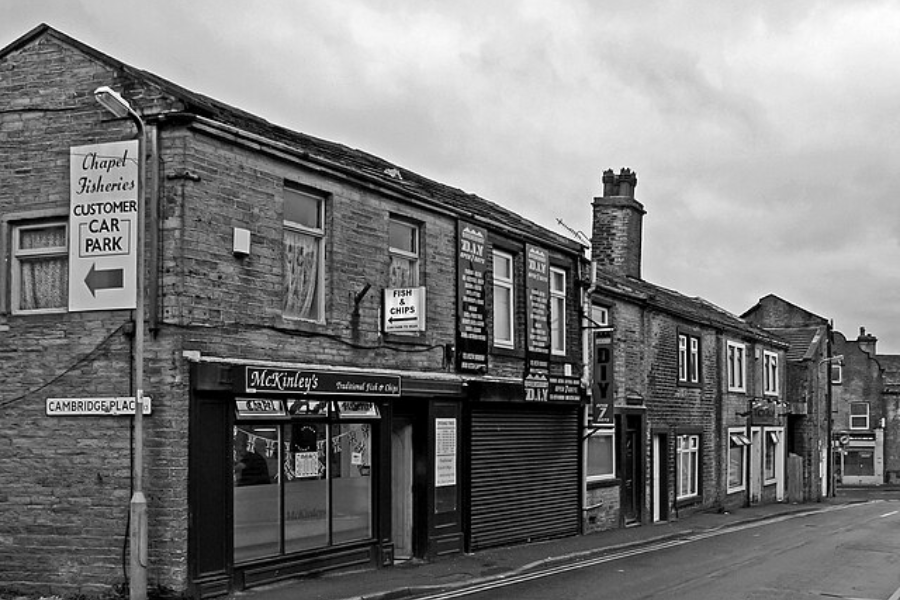
Eventually, the hospital released him. Not because he was cured, but because he didn’t need a bed. “Just come in for regular tests,” they said. And he did.
He left the hospital and returned to daily life, just without eating. No grocery shopping, no mealtimes, no chewing. His body had adjusted. His mind was surprisingly calm.
But while he was working at the chip shop, he admitted the smell of frying oil might break him. He was too close to surrender. So close, he needed to make an action.
Running on Empty

Doctors kept testing his blood. What they found confirmed what they feared: Angus was in full starvation mode. His body was running on stored fat. Pure survival energy.
Glucose, the fuel food gives us, was nearly gone. But his body had switched systems. Now, it was melting fat cells, turning them into ketones, and running on that.
Science calls this ketosis, but even ketosis has limits. No one expected a man to last more than a few weeks this way. Angus was approaching half a year.
When Temptation Hits Too Close to Home

Every morning, his father’s shop sizzled with hot oil and vinegar. Fish crackled in golden batter. Customers lined up. Angus used to love it. But not anymore.
He knew he couldn’t take it—the scent, the memories, the cravings. So, he made the hardest decision of all. He quit the job he’d held for years.
“It was too much,” he later admitted. And just like that, the chip shop became part of his past. His fast was now the only thing left to focus on.
The Final Day: July 11, 1966

On that morning, the world changed for Angus Barbieri. He stepped on the scale. He saw the number: 180 pounds. The goal he’d whispered for over a year.
Doctors gathered in the room. Nurses peeked in. No one had seen this before. A man who hadn’t eaten in 382 days was still standing, smiling, even.
His body was transformed. His face, unrecognizable. His eyes, sharp. But what would come next? Could a man who’d starved so long ever eat again without risk?
One Year and 17 Days Without Food
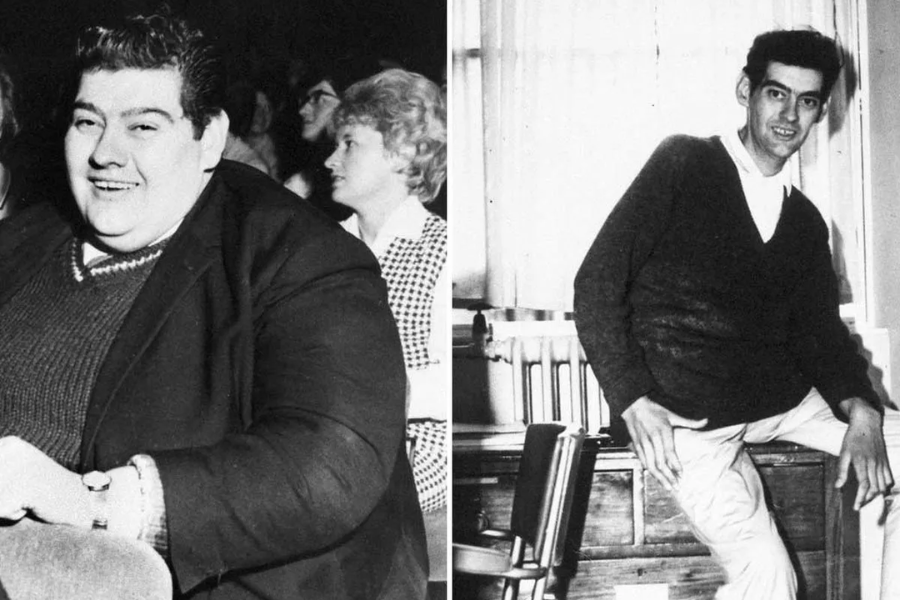
News spread like wildfire. Headlines screamed about the man who didn’t eat for a year. People didn’t believe it—until they saw the before-and-after photos.
From 456 pounds to 180. A transformation that looked impossible, even unnatural. But the scales didn’t lie, and neither did the hospital records kept throughout the fast.
Angus wasn’t looking for fame. He just wanted to change. But now, the world was watching, questioning how a human body could even survive such an ordeal.
276 Pounds Lost, One Boiled Egg Gained
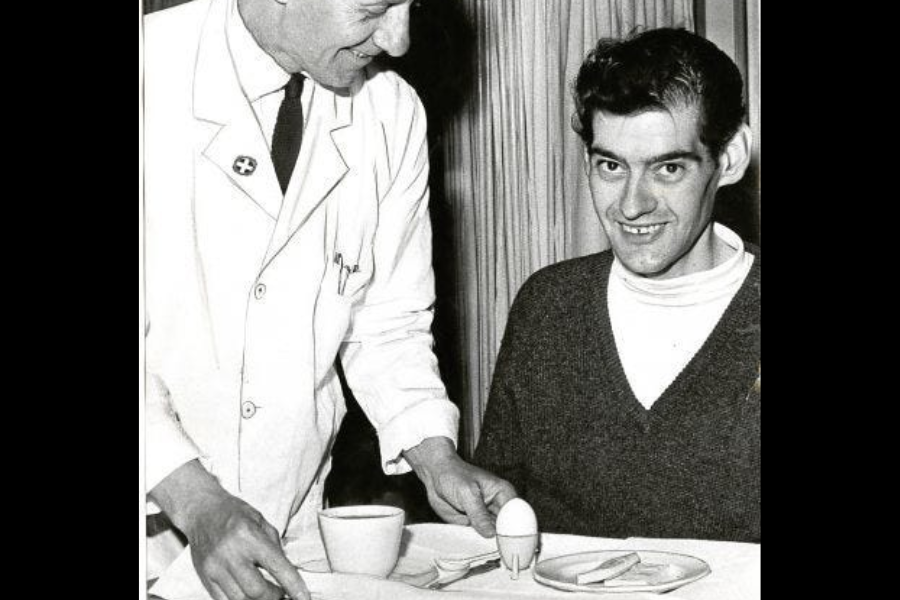
When the fast ended, there was no feast. No roast, no dessert. Angus sat down quietly and reached for a single boiled egg and a piece of buttered bread.
He chewed slowly, methodically. A bite of egg, a sip of coffee. That modest breakfast would be the first solid food in over 54 weeks.
And he didn’t rush it. His stomach, now small and fragile, could only handle so much. He said afterward, “It filled me right up.” That tiny meal meant everything.
Why His First Bite Could Have Killed Him

Doctors had warned him—eating too much too fast could overload his system. After such a long fast, even food could be dangerous. His organs needed to readjust.
That’s why they insisted he start small. Refeeding syndrome was a real threat. A surge of electrolytes from heavy meals could send the body into chaos.
Angus listened. He’d come too far to collapse at the finish line. One egg. One slice of bread. He’d wait to see if his body could still say “yes.”
A Return to Life in Tiny Bites

After that first breakfast, Angus didn’t rush back into normal eating. Each day brought a little more. Yogurt. Soup. Fruit slices. All portioned, all measured, all slow.
He knew it would take time. The body he was in had forgotten how to digest food. Even the taste of things had become unfamiliar again.
But little by little, he got there. He said food tasted richer now, more intense. And even though he ate again, he never took a single bite for granted.
The Vacation He Earned and the Life He Rebuilt
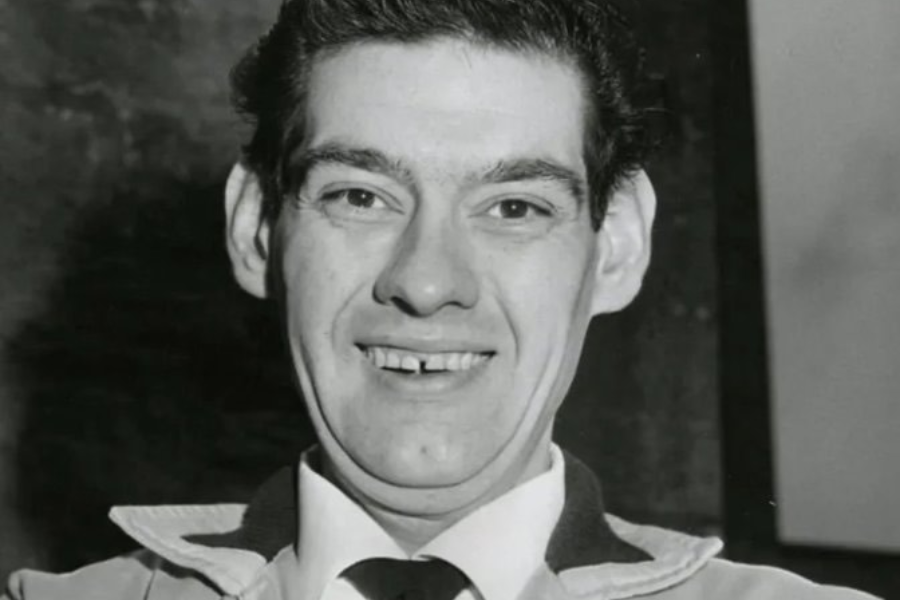
After the fast, Angus took a trip to Spain. He said he wanted sunlight, beaches, and peace—a reward after a year of living without life’s simplest pleasure: eating.
He didn’t pack snacks. He wasn’t suddenly craving buffets. Instead, he approached meals with care, discipline, and gratitude. His vacation was about joy, not indulgence.
And when he came back, he wasn’t just thinner—he was different. The challenge had reshaped not just his body, but his entire approach to food, hunger, and control.
Only 15 Pounds Regained
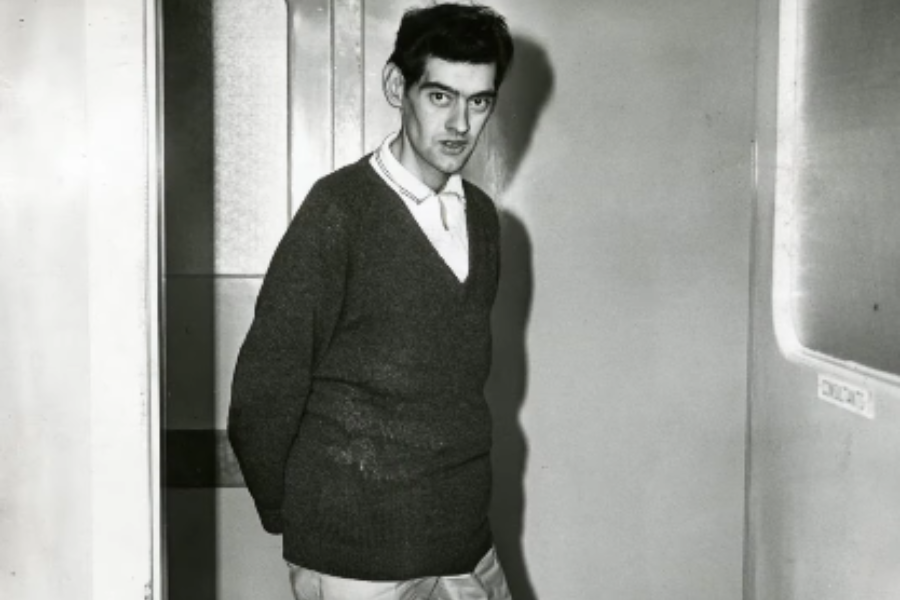
Most extreme diets end the same way—rebound. Weight lost quickly comes back even faster. But with Angus, the weight stayed off. He gained only 15 pounds post-fast.
Doctors had doubted this part the most. “He’ll bounce back,” they assumed. But he didn’t. He kept his eating in check and maintained balance, without obsessing.
That outcome—so rare, so unusual—made Angus an outlier. And the whole world was waiting to hear his story, Guinness had to make a move.
The Record No One Should Break
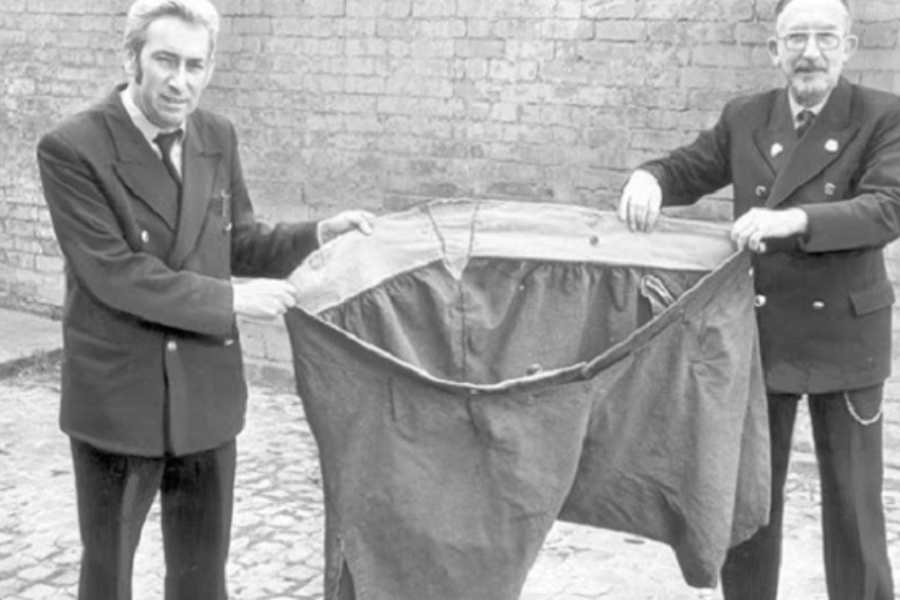
Angus’s fast became a world record. Guinness noted it: “The longest recorded fast ever.” But soon after, they made a decision—they would no longer accept such feats.
Too risky. Too extreme. Too easy for someone desperate to try replicating it without medical help. They didn’t want a copycat turning this into a fatal challenge.
So while Angus earned the title, no one else would be allowed to claim it. And that silence from Guinness said everything: don’t try this at home. Why? Even doctors can’t pinpoint it.
Doctors Still Struggle to Explain It
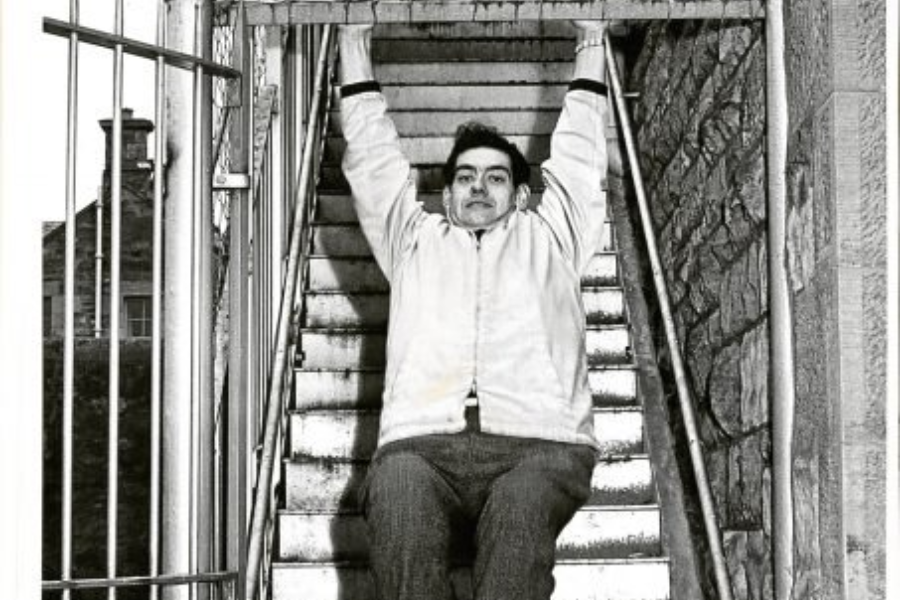
Years later, medical journals still referenced Barbieri’s fast. Scientists debated how a man survived so long without food. Some called it biological luck. Others called it evolution in motion.
“His fat stores must’ve been abnormally efficient,” one nutritionist speculated. “And his mental control? Off the charts.”
Dr. Karl Kruszelnicki once said on air, “Barbieri’s case remains unmatched. Fasting is natural in small bursts, not in this extreme manner. No one else should try.” Though one explanation finally resurfaced.
The Ancient Code Written in Our Cells

Researchers believe that the ability to fast for long periods is deeply rooted in human history. Our ancestors faced famine, drought, and periods without food during hunts or during the harsh winters.
“The body slows everything down,” one anthropologist noted. “Heart rate. Breathing. Digestion. It’s a shutdown mode—a way to ride out starvation like a storm in the bones.”
But those ancestral fasts lasted weeks, not years. Angus pushed beyond those limits, despite his body shutting down; he believed it was the opposite. He later argued…
A Brain Made for Survival

“It’s like my thoughts got sharper. Clean, even. Not cloudy like before.” Oddly, many fasters report mental clarity after days without food.
Scientists believe this may also be evolutionary. “A starving brain must solve the problem,” said one neurologist. “If it shuts down, we die. So it works harder.”
But clarity doesn’t equal health. In fact, the body is telling you the exact opposite. Experts have further explained the effects of unsupervised fasting on your body.
How the Brain Reacts to Starvation

Scientists now understand why fasting sometimes brings mental clarity. “The brain needs food,” said neurologist Dr. Evelyn Hayes, “but it also has emergency wiring for famine.”
That clarity Angus described—“like my thoughts were cleaner”—was his brain firing on survival mode. Focus spikes. Thoughts sharpen. It’s how humans hunted during lean times.
But it’s not sustainable. “Cognitive lift isn’t a sign of thriving,” Dr. Hayes warned. “It’s a flare—bright, brief, and ultimately burning out.” Angus didn’t see it that way. His life after the diet proved it.
The Man Behind the Myth
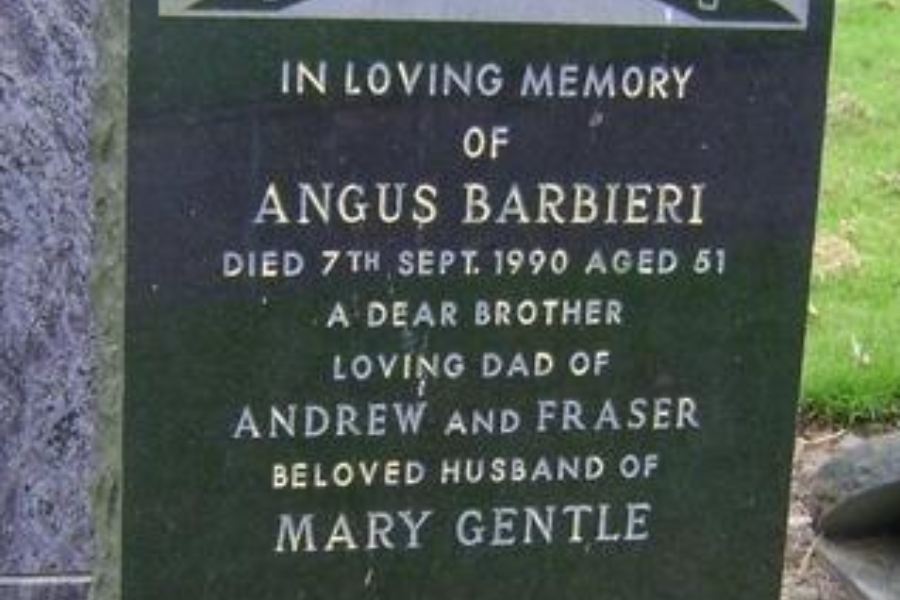
Angus thrived, healthy, and eventually left the spotlight. He moved to England. Married. Had children. He became a father, not a footnote. But those who knew the story never forgot.
“He was gentle,” his son once said. “Didn’t talk about it much. But when he did, it always ended with, ‘Don’t ever do what I did.’”
And in September 1990, Angus died after a short illness. No actual reports of whether his extreme diet caused his death. He was 51 years old. He lived long enough to warn others, and doctors are also up to no mistakes.
What Modern Doctors Would Say Today

If Angus walked into a hospital today with the same request, doctors wouldn’t allow it. Not under any condition. Fasting this long would now be considered medical malpractice.
There are safer ways. Doctors can perform surgery, provide nutrition therapy, and offer counseling. Starving yourself is neither modern medicine nor an acceptable treatment.
Protocols, ethics boards, and legal liability would stop it cold. Angus’s fast happened in a gap—between what science understood and what desperation allowed. But some still attempted to replicate the risk.
Modern Echoes of Extreme Dieting
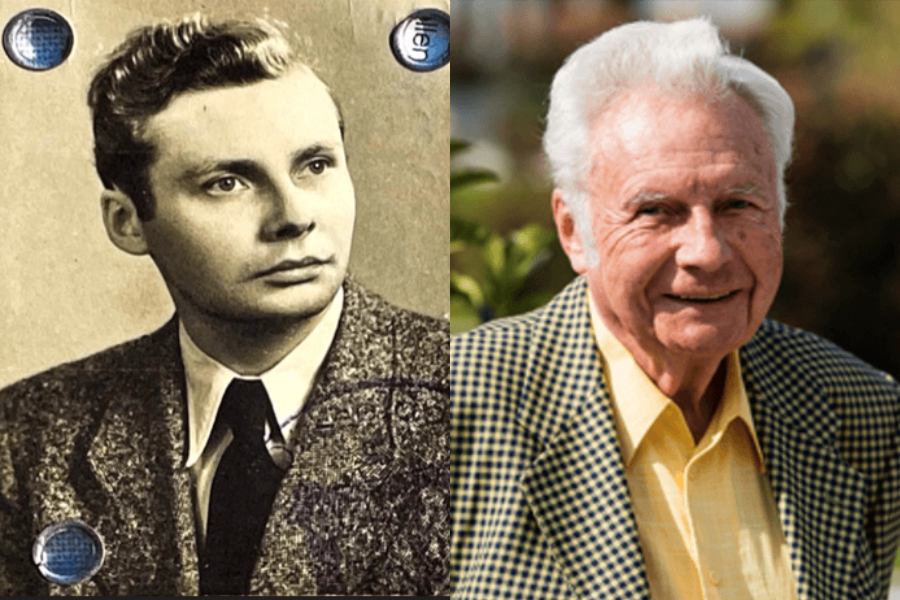
Decades after Angus Barbieri’s fast, other names have surfaced—people who tried extreme diets under medical eyes. But none walked alone. And none lasted nearly as long.
Friedrich Klapdor fasted for 21 days each year at the Buchinger Wilhelmi clinic—for 45 straight years. “The body thrives when respected,” he once told researchers. “Not pushed to breaking.”
Others followed structured plans: a 59-year-old on a year-long calorie-restricted diet; a 49-year-old with super-obesity who dropped over 90 kilograms. But all had doctors watching—every step, every swallow.
Safe Weight Loss Doesn’t Require Starvation

Today, gradual, supervised weight loss is the standard. Nutritionists craft plans. Behaviorists support change. No one needs to disappear inside their own body to escape it.
“There’s help now,” said one NHS counselor. “And hope. The number on the scale isn’t worth risking your life for. No one needs to vanish to survive.”
Angus’s case reminds us what’s possible. But more importantly, it reminds us what’s dangerous. Because not everyone would have made it back. And not every mind can fight the cravings that come first. So, what is it, really?
Why We Want What We Can’t Have

Cravings aren’t just about hunger—they’re emotional reflexes. Stress, memory, and routine light up the brain’s pleasure centers, creating desire long after the body’s needs are met. Angus had to mute it all.
Neurologists say just imagining food activates dopamine. The smell of batter or coffee could derail progress. Angus avoided it completely—not out of strength, but because biology doesn’t negotiate.
He wasn’t just hungry. He was rewiring instinct. And as his body changed, the next risk became clear: not fat loss, but muscle loss.
What Happens to Muscle During a Long Fast?

Fat burns first, but muscle follows. Without food, the body can raid its own tissue—heart, lungs, limbs—to keep blood glucose alive. It’s survival at a cellular cost.
Angus avoided collapse with potassium and magnesium, preserving muscle surprisingly well. Still, his heart was at risk. Even standing too fast could have been dangerous.
He escaped that fate. But another shift was underway—one far deeper than muscle. His body had fully flipped its energy system. The science behind it? Ketosis.
Ketosis vs. Starvation
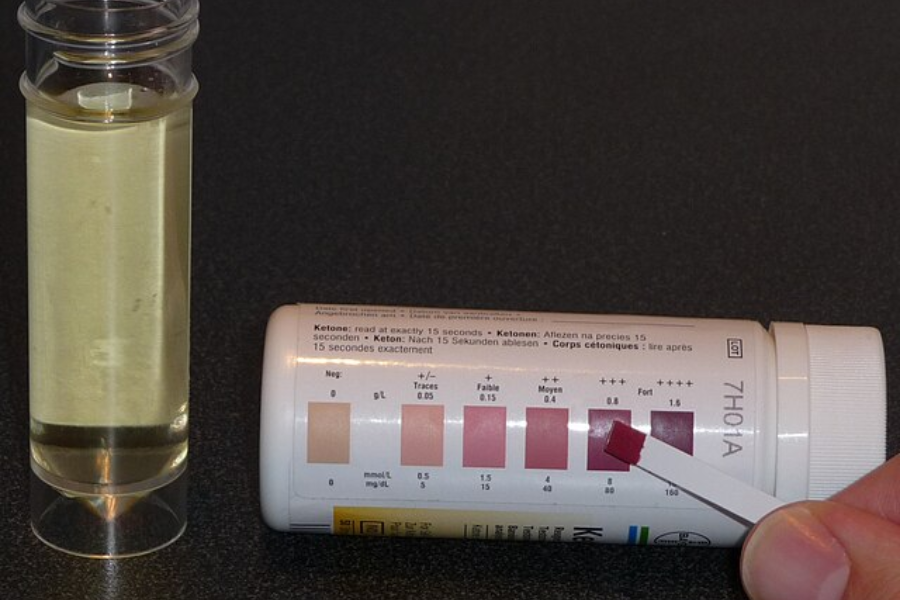
Ketosis is a buzzword today. But Angus wasn’t on a trendy diet—he was in medical ketosis. His liver converted fat to ketones to power his brain and organs.
Unlike structured keto diets, his was raw and unbuffered. Acid levels rose. Ketone bodies flooded his bloodstream. The margin for error narrowed with every passing week.
His metabolism adapted. But how long could that adaptation last? Eventually, the system slows down to conserve energy. That slowdown brings myths. And Angus would prove one of them wrong.
Metabolism Myths
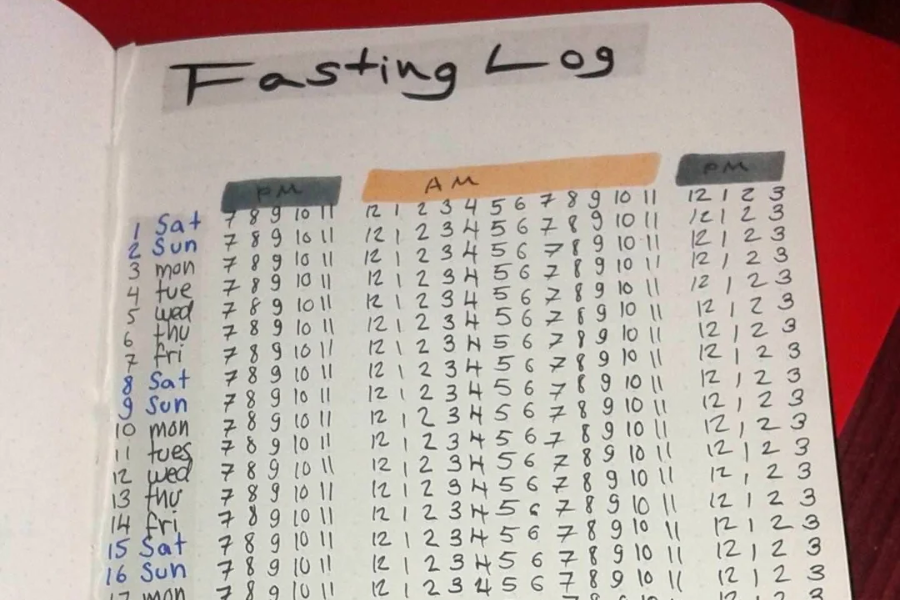
Most believe fasting ruins metabolism. But short-term deprivation can spike it temporarily. The body panics, heightens alertness, and releases adrenaline. Angus, in his early days, burned hotter, not slower.
But over time, systems cool. His body reduced output to preserve fuel. Yet his discipline helped avoid metabolic freefall—something few achieve under such stress.
Despite this balance, another system was quietly deteriorating—one most couldn’t see. His gut. It had been empty for months. And that emptiness comes with consequences.
How Gut Health Suffers Without Food

The gut needs food—not just calories, but fiber, roughage, fermented starches. These feed the microbiome, the invisible army that protects immunity, mood, and digestion.
With no prebiotics or fiber, balance vanished. Doctors didn’t yet understand microbiomes, but today’s science raises serious concerns about the long-term effects of starvation.
And yet, after all that deprivation, Angus survived the return of food. Barely. Because refeeding isn’t just risky—it’s deadly, if handled wrong.
The Science of Refeeding Syndrome
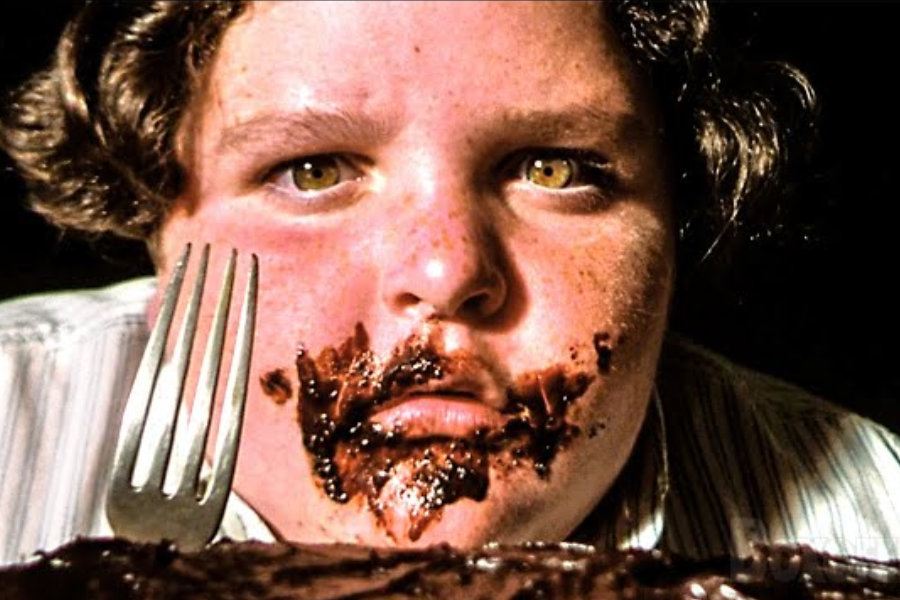
Refeeding syndrome is the cliff at the end of starvation. Give too much food, too fast, and the electrolyte crash can stop the heart—literally.
That’s why Angus started with one egg. Toast. A sip of coffee. No feast. No celebration. He took cues from the doctors, waiting to feel if life still fit.
He survived that re-entry. But now came another test: learning to eat again, bite by bite, in a body that had forgotten how.
What Makes a Diet ‘Healthy’—and Who Decides?

A “healthy” diet isn’t starvation. It’s sustainable, flexible, and nourishing. Angus achieved weight loss, yes—but not in a way today’s doctors would ever endorse.
Health means energy, not endurance. Joy, not deprivation. Angus proved what’s possible—but also what’s unsustainable. His recovery would need more than calories. It would need rebuilding.
And even though his weight stayed low, questions lingered: what hidden damage did the fast leave behind?
The Long-Term Impact on Angus’s Body
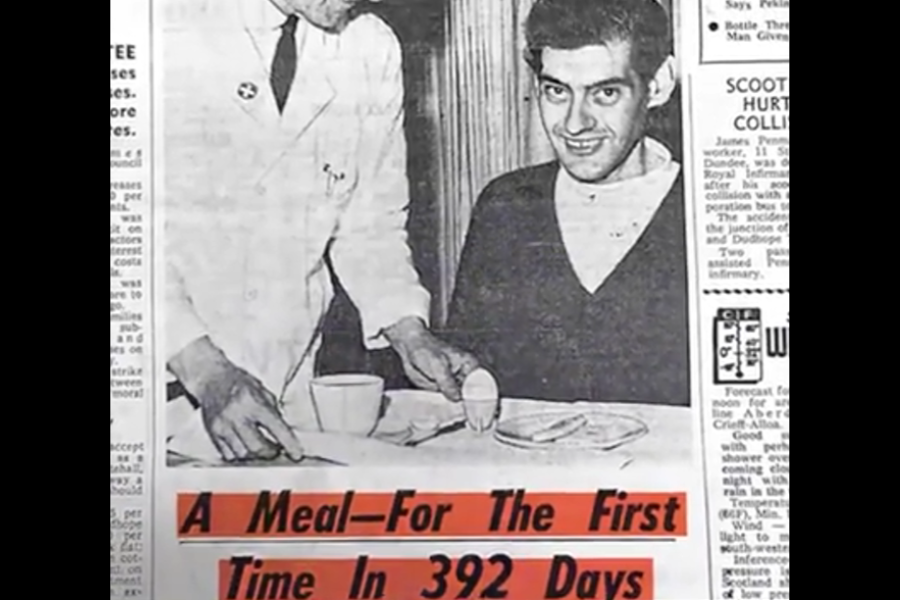
No one scanned his organs. No blood panels tracked his enzymes. Angus returned to life with little medical follow-up—and a body that had aged in silence.
Extreme weight loss can cause organs to shrink, bones to become fragile, and the gallbladder to weaken. But Angus kept moving forward. Whatever toll it took, it stayed locked in private.
Yet, as the decades passed, fasting returned—not as a medicine, but as a marketing tool. A movement was forming. And Angus’s shadow was at its edge.
Fasting in Today’s Culture

Today, fasting is structured—intermittent, cyclic, monitored. But the word still draws danger. Social media spins “cleanse” into starvation. Influencers glamorize extremes. Science gets buried under hashtags.
Angus’s story wasn’t trendy—it was terrifying. But online, his fast reemerged as inspiration. Misinterpreted. Cropped. Romanticized. The warning blurred into a blueprint.
That’s why his story still matters. It’s not just what he did—it’s what he endured, so others wouldn’t repeat it.
What We Can Learn Without Repeating the Past
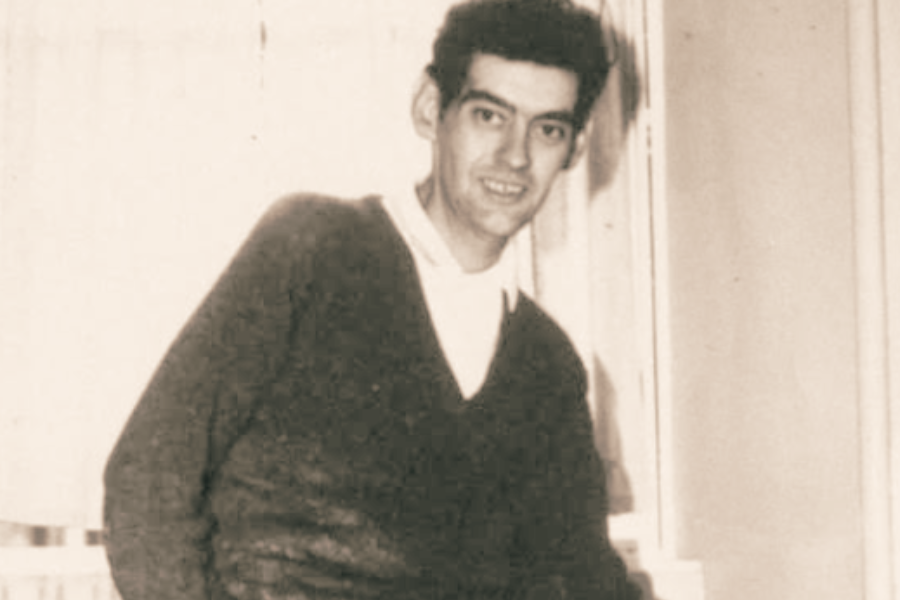
Angus Barbieri fasted for 382 days. It remains the longest recorded fast in human history. A feat of willpower—and a cautionary tale wrapped in medical disbelief.
His case taught science what to watch for—refeeding risks, gut health, metabolic shifts. But the biggest lesson wasn’t in bloodwork. It was in restraint.
And if it teaches us anything, it’s this: the body can do amazing things. But survival isn’t success if the risk is too great to return. You need structure. You need support.
